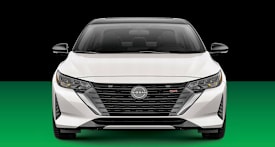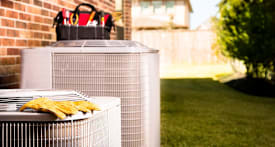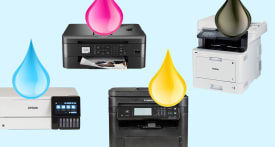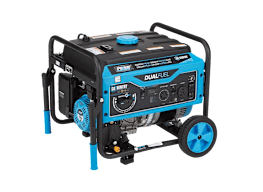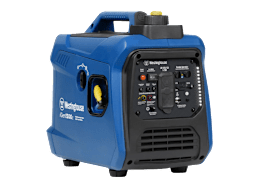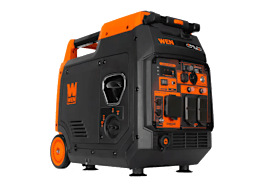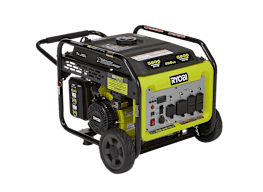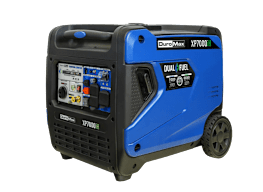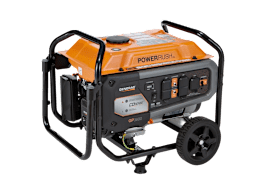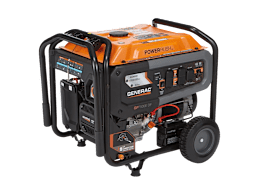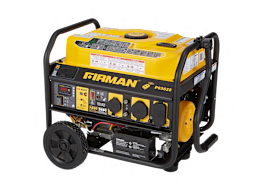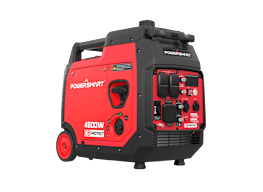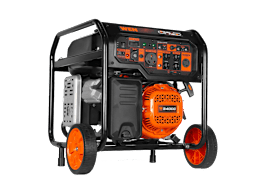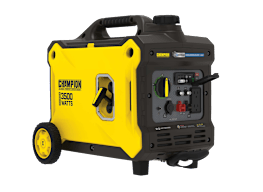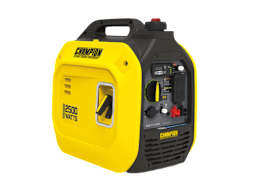Best Portable Power Stations
These three highly rated models earn top-level marks for power quality, recharge speed, and noise
When you shop through retailer links on our site, we may earn affiliate commissions. 100% of the fees we collect are used to support our nonprofit mission. Learn more.
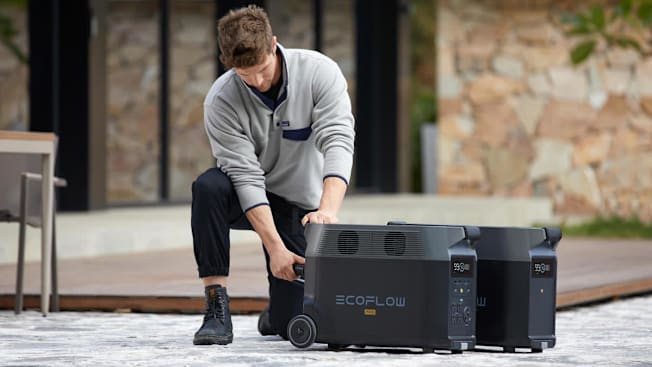
If you’ve ever used a pocket-sized power bank to recharge your phone, you’ll appreciate the utility of a portable power station. It’s essentially a large rechargeable lithium-ion battery with an array of outlets that you can use to power appliances and other devices, both in your home and on the road.
It can keep your gear running at a campsite or a tailgate and, yes, during a power outage, too (though only for a limited stretch of time).
CR's Guide to Home Improvement
Find top-rated products and expert tips to help you save energy and money—and protect your home from extreme weather.
Best Portable Power Stations
We’ve tested models from top-rated brands, and these are the best portable power stations from our testing, earning top marks for recharge speed and power quality.
What Can You Do With a Portable Power Station?
If your blackout is relatively short, a power station can deliver what you get with a generator—enough electricity to run essential systems and appliances for a few hours’ time. And it does so without the hassle of jump-starting an engine that’s been sitting idle in the garage for months.
The number of devices you can power depends on the power station’s capacity, which ranges from 1,800 to 6,000 watts in the models we tested. (The chart below can help you determine what you need.) The run time is measured in watt-hours.
What a Portable Power Station Can Power
Click on any size power station below to see what it will run in your home.
Small Power Station
(up to 2,000 watts)
Midsized Power Station
(up to 3,500 watts)
Large Power Station
(up to 6,000 watts)
A 2,000-watt power station, like the Jackery Solar Generator 2000 Pro, has enough capacity to power a fridge, some lights, and a phone charger, but not much else. The Jackery can’t be connected to a circuit breaker panel or used to power a hardwired device like a water heater or a well pump.
By contrast, a large 6,000-watt power station, like the Anker Solix F3800, can run a refrigerator, lights, and other essentials, such as a furnace or small central air conditioning unit. It’s best if a unit this large is connected to your home’s breaker panel via a transfer switch or an interlock device—a piece of equipment that allows you to plug the power station into your electrical panel and run a well pump or other hardwired equipment.
A power station can also be used like an inverter generator to supply power at a campsite or a tailgate party. Indeed, power stations have become an on-the-road staple for those who revel in the adventures of van life.
They’re also a bit more flexible than generators in delivering power, because they often supplement the standard 110-volt, three-prong outlets with the USB-A and USB-C ports used to power phones, laptops, and portable speakers.
Advantages of a Portable Power Station
Here are the best reasons to invest in a portable power station:
It’s quiet. Since it doesn’t have an engine, a portable power station is very quiet. Many don’t even have a cooling fan, so those—including those we’ve tested—are dead silent. While tranquility may not be a huge consideration when your electricity is out, a near-silent power source at a campsite allows you to hear the lilting birdsong of the wood thrush instead of the rumble of a generator.
It doesn’t emit dangerous carbon monoxide fumes. As a result, portable power stations don’t require the safety precautions of a generator, which include outdoor placement, at least 20 feet from a home or garage, with the exhaust directed away from windows, doors, and air conditioners. You can run a power station in your kitchen, basement, or garage, eliminating the need for an awning to keep the unit dry in the case of a generator. That makes a power station a compelling alternative for apartment dwellers who want emergency backup power but lack the outdoor space to run a generator.
It has solid power quality. Our testers report that all of the power stations we tested earn top marks for power quality, which is the ability to deliver clean power without the dips and spikes that can damage sensitive electronics. Power stations are rated both in watt-hours, which is how much power they can deliver in a stretch of time, and in watts, which is essentially equivalent to the watt ratings of generators in their ability to power devices. They come in all sizes, from models that can keep a laptop and a few lights alive to much larger ones that can be daisy-chained into a whole-house backup power solution.
Your first task is to decide which devices and appliances you want to power and how much capacity you need to get the job done (see the chart above). Since a larger appliance like a refrigerator can kick on and off and cause a power surge, our experts recommend that you leave a little leeway between the total wattage of your appliances and the max power of your station.
Disadvantages of a Portable Power Station
Here are the reasons you might avoid a portable power station:
It isn’t always convenient. The biggest disadvantage is that, like any battery, your power station runs out of power. And when that happens, you have to disconnect the unit and find a way to recharge it—a process that can take hours. That’s an inconvenience if you’re using the power station to charge your laptop, but it’s a major problem if you’re relying on it to keep those bags of Trader Joe’s Mandarin Chicken in your freezer cold, or at another level, to power vital medical equipment for a loved one. A generator has a big advantage here. Yes, it runs out of fuel, but when that happens, you just turn it off and refill the tank from a gas can, with only the briefest interruption of power.
Its recharge rate can be slow. Not all portable power stations recharge at the same rate. When calculating Overall Scores, our testers assign the highest weight to recharge speed. Our three top-rated models—the Eco Flow Delta Pro, the Anker Solix F3800, and the Jackery Solar Generator 2000 Pro—all earn top marks for recharging speed, and complete the refueling process about six times as fast as the slowest-charging models in our testing.
"The faster models will get you to a meaningful level of charge sooner," says Bernie Deitrick, who heads our portable power station testing. "If you need 1,800 watt-hours to perform your tasks, a model that charges at around 1,200 watts per hour, like our three top-rated power stations, will get there in about 90 minutes, while a model that charges at 200 watts per hour, like our slowest-charging model, the Goal Zero Yeti 3000x, will take around 9 hours."
Each of the models we tested has portable solar panels that can be used to recharge the unit, but it’s often a slow process, especially when the sky is filled with storm clouds. You’re better off using the panels to extend the range of the battery, not to refill it, Deitrick says.
Power stations can be connected to the roof-mounted solar panels on some homes as well, but we didn’t test that option.
It’s heavy. And, for what it’s worth, the portable power stations we evaluated are not all that portable. The Anker Solix F3800 weighs a whopping 132 pounds while the relatively svelte Jackery Solar Generator 2000 Pro comes in at a substantial 43 pounds. Our two top-rated models have luggage-style wheels, but you still might have to lift them into a vehicle for off-site recharging. Yes, portable generators can be large and heavy, too, but they don’t need to be moved for recharging.
It’s expensive. Finally, portable power stations are quite expensive, too. Our top-rated model—the ECO flow Delta Pro Portable—puts out 3,600 watts and costs almost $3,000. You can buy a top-rated 3,700-watt inverter generator like the Champion 201049 for as little as $600.
Should You Buy a Portable Power Station?
It ultimately comes down to how you plan to use it.
Our ratings chart can help you zero in on a model that charges in a hurry and delivers high-quality power, but for many people, a gas-powered generator will be cheaper and more effective in a power outage, when it’s easier to access fuel than electricity or sunshine.
But if a portable power station’s most important virtues—quiet operation and the placement flexibility that comes with a lack of dangerous emissions—suit your needs, you might find it worthwhile to pay more than you would for a comparably sized generator.
How CR Tests Portable Power Stations
In our labs, CR test engineers evaluate six key measures to rate portable power stations: recharge speed, power delivery, power quality, portability, ease of use, and noise. We did not test the manufacturer’s run time claims.
Recharge speed is based on how quickly the station takes a charge while plugged into a 120-volt power source. Models that can be recharged more quickly can be returned sooner to the task of running critical equipment within your home.
Power delivery is based on how well the voltage is maintained and how well the unit handles surges in power. Higher power output means more equipment can be run at the same time. Power quality reflects the station’s ability to deliver clean power over various loads.
We also judged noise and found that, as a category, these models run silently, all earning excellent scores.
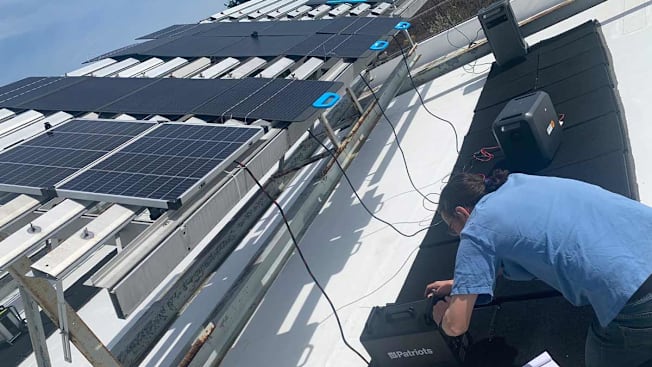
Photo: Allen St. John/Consumer Reports Photo: Allen St. John/Consumer Reports
